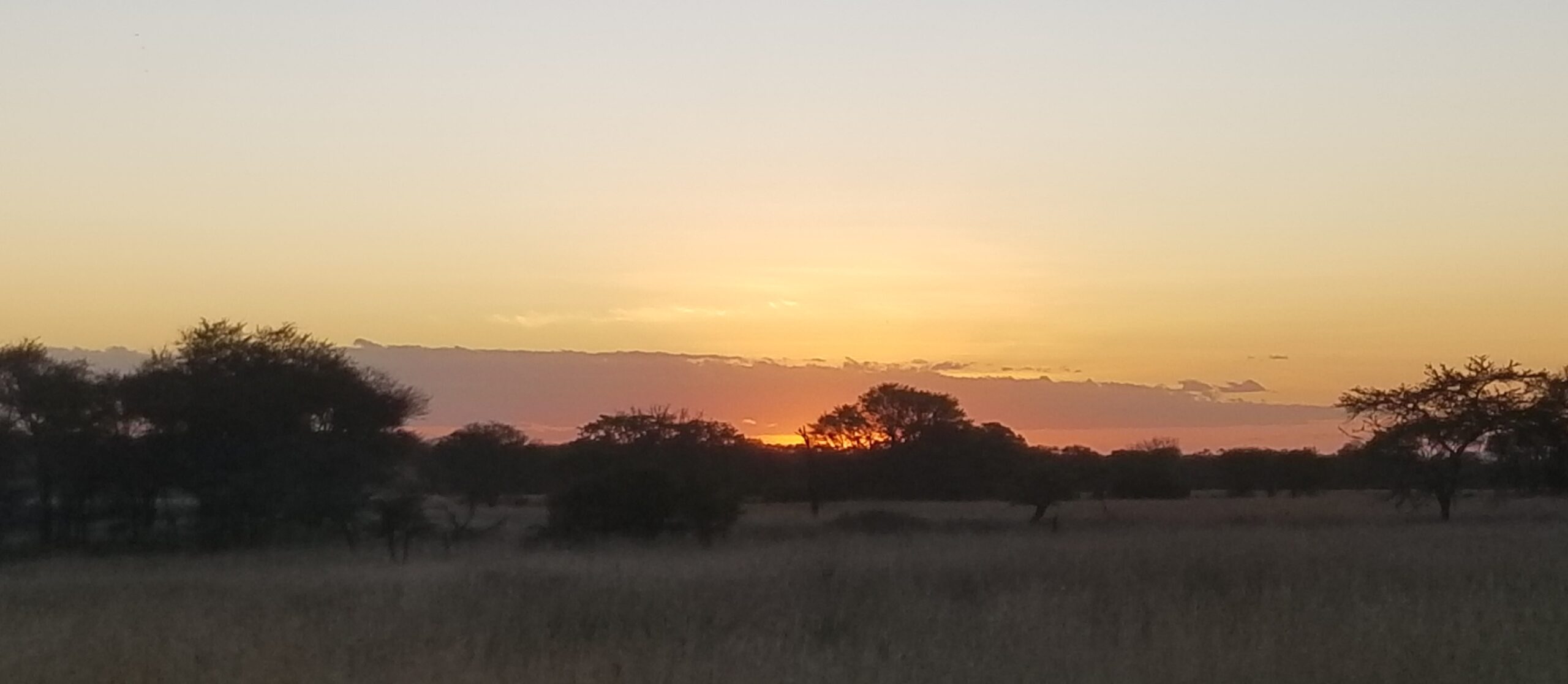Our final outing for the day was in the evening, to see if we could spot any leopards. That is the only “big” animal that we haven’t seen at all. They’re a little tricky to spot, because they hang out in tall trees with horizontal branches and you have to look for their tails hanging down.
As it turned out, there was nobody home in any of the trees on our two hour drive. But we did see many other very cool things. There were some vervet monkeys hanging out in trees by the river, and olive baboons heading up into trees for the night. Mick spotted a Verraux’s Eagle Owl in a tree, and also a White-Backed Vulture nest with a baby vulture in it. Way to go, Mick! There were some lovely colorful birds called Little Bee Eaters, and a Bared-Face Go-Away Bird, named for its call. Steven, our driver, picked some Bushman’s Tea for us to smell – I think it was a member of the mint family because it had a square stem and a sweet citrusy-minty smell.
While we were driving around, Steven also told us about the hierarchy of predators:
- Lions are number one.
- Hyenas are next, although sometimes hyenas will gang up on a solo lioness and try to steal her prey.
- Then leopards,
- Then cheetahs,
- Then the wild dogs (like jackals)
As a general rule, each predator can and will take prey from those lower on the list, and each has strategies to protect their kills from those higher on the list. Although sometimes that strategy is to just run away, and live to kill something else. Leopards drag their prey up into trees, and cheetahs eat really fast. Also, cheetahs will run away (no surprise!) if they are challenged by a leopard or hyenas or a lion for their kill.
At sunset, as we finally gave up on seeing a leopard and started back to camp, we drove through an area that had been part of a controlled burn. These are done selectively to help get rid of the tall dry grass, which is not very nutritious, and make way for new green growth that is better for the baby animals. This area had been burned just a few weeks earlier and was already putting up new green shoots all over the place.
Tomorrow, we head for the Ngorongoro region for our final three days of this adventure. Mick and I plan to get up at 5:00 AM to go out and star-gaze.

